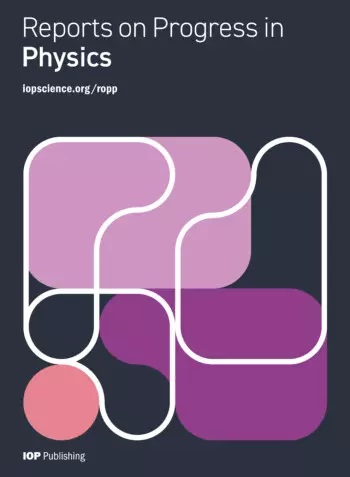Active optical metasurfaces: comprehensive review on physics, mechanisms, and prospective applications
IF 20.7
1区 物理与天体物理
Q1 PHYSICS, MULTIDISCIPLINARY
引用次数: 44
Abstract
Optical metasurfaces with subwavelength thickness hold considerable promise for future advances in fundamental optics and novel optical applications due to their unprecedented ability to control the phase, amplitude, and polarization of transmitted, reflected, and diffracted light. Introducing active functionalities to optical metasurfaces is an essential step to the development of next-generation flat optical components and devices. During the last few years, many attempts have been made to develop tunable optical metasurfaces with dynamic control of optical properties (e.g., amplitude, phase, polarization, spatial/spectral/temporal responses) and early-stage device functions (e.g., beam steering, tunable focusing, tunable color filters/absorber, dynamic hologram, etc) based on a variety of novel active materials and tunable mechanisms. These recently-developed active metasurfaces show significant promise for practical applications, but significant challenges still remain. In this review, a comprehensive overview of recently-reported tunable metasurfaces is provided which focuses on the ten major tunable metasurface mechanisms. For each type of mechanism, the performance metrics on the reported tunable metasurface are outlined, and the capabilities/limitations of each mechanism and its potential for various photonic applications are compared and summarized. This review concludes with discussion of several prospective applications, emerging technologies, and research directions based on the use of tunable optical metasurfaces. We anticipate significant new advances when the tunable mechanisms are further developed in the coming years.主动光学超表面:物理、机制和前景应用的综合综述
具有亚波长厚度的光学超表面在基础光学和新型光学应用中具有相当大的前景,因为它们具有前所未有的控制透射、反射和衍射光的相位、振幅和偏振的能力。将主动功能引入光学超表面是开发下一代平面光学元件和器件的重要一步。在过去的几年中,基于各种新型活性材料和可调谐机制,已经进行了许多尝试,以开发具有动态控制光学特性(例如,振幅,相位,偏振,空间/光谱/时间响应)和早期器件功能(例如,光束转向,可调谐聚焦,可调谐滤光片/吸收器,动态全息图等)的可调谐光学超表面。这些最近开发的有源元表面显示出实际应用的巨大前景,但仍然存在重大挑战。在这篇综述中,全面概述了最近报道的可调元表面,重点介绍了十种主要的可调元表面机制。对于每种类型的机制,概述了所报道的可调超表面上的性能指标,并比较和总结了每种机制的能力/限制及其在各种光子应用中的潜力。本文总结了可调光学超表面的应用前景、新兴技术和研究方向。我们期待在未来几年可调机制进一步发展时取得重大的新进展。
本文章由计算机程序翻译,如有差异,请以英文原文为准。
求助全文
约1分钟内获得全文
求助全文
来源期刊

Reports on Progress in Physics
物理-物理:综合
CiteScore
31.90
自引率
0.00%
发文量
45
审稿时长
6-12 weeks
期刊介绍:
Reports on Progress in Physics is a highly selective journal with a mission to publish ground-breaking new research and authoritative invited reviews of the highest quality and significance across all areas of physics and related areas. Articles must be essential reading for specialists, and likely to be of broader multidisciplinary interest with the expectation for long-term scientific impact and influence on the current state and/or future direction of a field.
 求助内容:
求助内容: 应助结果提醒方式:
应助结果提醒方式:


